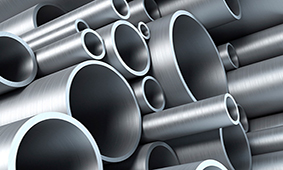
Viewpoint: Russia slowdown could increase steel exports

After a lacklustre 2019, which registered an average of 0.33pc construction growth per month, 2020 looked like it would be a stronger year — 1pc growth was recorded in January followed by 2.3pc in February. Although March figures have not yet been released, contraction in construction output is likely given the recent lockdown.
Russia's manufacturing PMI hit an all-time low of 31.3 in April, down from 47.5 in March, signalling the fastest contraction since September 1997 as the coronavirus obliterated activity levels.
With demand likely to remain muted this summer — exacerbated by low oil prices that will impact Russia's public spending budget as well as its currency — most steel mills will see the export market as a more attractive option over the summer, weighing heavier on seaborne prices. Typically, the milder months of April to August see higher levels of construction in Russia. In last year's saturated export market, steelmakers were able to shift greater capacities to the domestic market, where prices remained relatively high.
The lack of desperation from CIS mills to sell on the export market last year also helped buoy export prices, which remained strong for rebar, wire rod and billet on a fob basis from January until August, when construction activity domestically began to wane. The average assessments for Black Sea billet, rebar and wire rod in 2019 were $405.94/t, $443.15/t and $469.73/t, respectively, but all three assessments dipped below this average at the beginning of September until the end of the year, reflecting greater supply available on the export market and lower demand.
And the gap between export supply and demand could be further widened this summer as several key purchasing markets look at imposing stricter limits on imports given the weak global market. Last week, the EU announced it would consider imposing emergency restrictions on steel imports after lobbying pressure from steel association Eurofer pushed for a 75pc reduction in existing quotas. When the quotas renew on July 1, Russia will be given a yearly export quota of 254,098t of rebar and 331,878t of wire rod. Yesterday, Egypt's parliament debated imposing an additional 10pc tax on top of existing tariffs amid market flatness.
Russia has typically been a substantial exporter to Egypt, with 1.4mn t of billet exported in 2016. But this has been slipping after safeguards were imposed by Egypt's government and in 2019, just 895,000t of billet was exported.
Similarly, in 2019, Russia exported 361,013t of rebar to the EU, down from 525,348t in 2018. In the first two months of 2020, the EU imported just 5,996t of Russian rebar. In 2019, Russia's wire rod exports to the EU also dropped to 249,494t compared with 368,170t in 2018. EU imports of Russian wire rod picked up again in the first two months of 2020 to reach 64,417, but increased protectionist measures could throttle this new appetite.
By Sara Warden


Trump weighs using $2 billion in CHIPS Act funding for critical minerals

Codelco cuts 2025 copper forecast after El Teniente mine collapse

Electra converts debt, launches $30M raise to jumpstart stalled cobalt refinery

Abcourt readies Sleeping Giant mill to pour first gold since 2014

Barrick’s Reko Diq in line for $410M ADB backing

Nevada army depot to serve as base for first US strategic minerals stockpile

Tailings could meet much of US critical mineral demand – study

Viridis unveils 200Mt initial reserve for Brazil rare earth project

SQM boosts lithium supply plans as prices flick higher

Energy Fuels soars on Vulcan Elements partnership

Northern Dynasty sticks to proposal in battle to lift Pebble mine veto

Giustra-backed mining firm teams up with informal miners in Colombia

Critical Metals signs agreement to supply rare earth to US government-funded facility

China extends rare earth controls to imported material

Galan Lithium proceeds with $13M financing for Argentina project

Silver price touches $39 as market weighs rate cut outlook

First Quantum drops plan to sell stakes in Zambia copper mines

Ivanhoe advances Kamoa dewatering plan, plans forecasts

Texas factory gives Chinese copper firm an edge in tariff war

Energy Fuels soars on Vulcan Elements partnership

Northern Dynasty sticks to proposal in battle to lift Pebble mine veto

Giustra-backed mining firm teams up with informal miners in Colombia

Critical Metals signs agreement to supply rare earth to US government-funded facility

China extends rare earth controls to imported material

Galan Lithium proceeds with $13M financing for Argentina project

Silver price touches $39 as market weighs rate cut outlook

First Quantum drops plan to sell stakes in Zambia copper mines

Ivanhoe advances Kamoa dewatering plan, plans forecasts

















